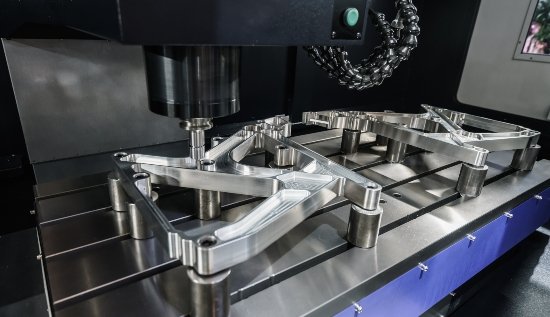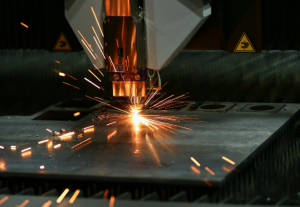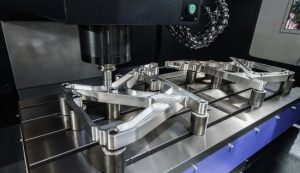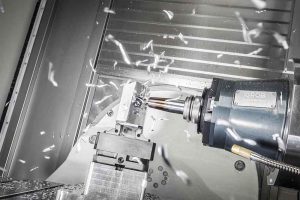The tolerance of a 5-axis CNC machine typically ranges from 0.002 to 0.005 millimeters. Top models like those from DMG Mori can achieve positioning accuracy as fine as 0.001 millimeters, ensuring extremely high machining precision.
Industry Standard Tolerance Range
Have you noticed that every time we talk about 5-axis CNC machines, we always mention that “precision”? This “precision” is actually what we call the tolerance range. The industry standard tolerance range is generally between 0.002 to 0.005 millimeters. Doesn’t that sound impressive? This tolerance ensures that every detail of the product is almost perfect.
If you are manufacturing aerospace parts, the required tolerance range is particularly stringent because any small error could lead to huge safety risks. In the aerospace industry, the tolerance range is generally between 0.001 to 0.003 millimeters. This is indeed an extremely high standard! According to Boeing’s data, their manufacturing tolerance is usually controlled within 0.002 millimeters. It’s important to know that the manufacturing of a Boeing 747 requires ultra-precision tolerance control, as it is directly related to flight safety.
In the automotive industry, the tolerance range is generally broader, usually between 0.01 to 0.02 millimeters. This is because car parts are relatively less complex, and the safety factor is not as high as for aerospace parts. You might think this doesn’t seem that important, but actually, this range is still very strict. Take Tesla’s Model 3 as an example; its body manufacturing tolerance is controlled within 0.015 millimeters. This ensures that every door, hood, and other component can fit perfectly, thereby enhancing the overall safety and aesthetics of the vehicle.
As you can see, different industries have vastly different tolerance requirements. For example, in the medical device industry, the tolerance range is usually between 0.002 to 0.01 millimeters. Imagine, these tiny differences can determine the success of medical devices, even directly relating to the patient’s safety. For example, some 3D printed medical devices, like certain heart stents, require tolerances within 0.003 millimeters to ensure that the stent can be accurately implanted into the patient’s blood vessels.
For example, some precision machinery companies list their tolerance standards in their promotional materials to demonstrate how precise their equipment is. A well-known Swiss machine tool manufacturer claims that their 5-axis CNC machines can achieve a tolerance of 0.002 millimeters, which is simply astonishing. According to the company’s data, they produce over 10,000 such high-precision machine tools annually, mainly for the aerospace and medical industries.

Key Factors Affecting Tolerance
When we discuss the tolerance of 5-axis CNC machines, many factors can influence this precision. It’s like solving a complex puzzle, where each part is crucial.
First, the machine’s own precision is key. A top-tier 5-axis CNC machine, like the models from DMG Mori, can provide positioning accuracy of 0.001 millimeters, which is finer than the diameter of a human hair. The manufacturing cost of such machines usually ranges from $500,000 to $2 million, making them synonymous with precision.
Environmental conditions greatly affect tolerance. Temperature changes can cause machine components to expand or contract. A temperature change of 1 degree Celsius can cause machine components to expand or contract by 0.01 millimeters. In high-precision machining, this is enough to ruin a project. To avoid this, some high-end workshops control the temperature within 0.5 degrees Celsius around 20 degrees Celsius and are equipped with expensive HVAC systems costing up to $100,000.
The choice and application of cutting tools is an additional crucial concern. The cutting tools simply wear out very quickly, particularly when doing the dirty jobs of harder materials. Based on research, it is expected that an average tool life must be 100 hours; however, this time can come drastically down under the mentioned extreme condition. Tools are mostly checked, repaired or changed per process hour and this might cost $5000 annually for maintenance. Tool inspection costs are approximately $500 per hour in some high-cost environments.
Materials should also have good stability. The coefficient of expansion and hardness will directly affect the processing accuracy for different materials. For instance, aluminum has a larger thermal expansion coefficient than titanium (23.1×10^-6/°C and 8.6×10^-6/°C respectively), which means that it expands more under the same temperature change, making tolerance control difficult. For factories that mold using aluminum, keeping things at the right temperature costs about $20k a year; for titanium, they will need to fork out an extra $30k on cooling.
The last factor is the operators’ experience. Operations professionals foresee issues and prevent them, whereas novices might miss details. This experience works out to savings worth hundreds of thousands of dollars in high-volume production, 30% of which can be attributed to the relatively low experience level when starting. An experienced operator can make around $80,000/year while a newer one will earn about $40K per year.
When Lockheed Martin was producing the F-35 fighter jet, it used these features to maintain components on average within 0.002 millimeters of one another, an accuracy nearly impossible to achieve by older methods alone. They accomplished this level of precision by installing $5 million in environmental control systems and spending another $3 million a year on tool maintenance.
The Impact of Tolerance on Product Quality
People often regard tolerances in 5-axis CNC machines as changes to a lower number of decimal places, but variance has an enormous impact on the overall quality. What if you are manufacturing aircraft engine parts that have to be made within 0.002 mil tolerances? One small mistake could greatly reduce the power of an engine, or even lead to a flight failure.
The same holds true for the medical device industry. These stents used are of very high precision as they directly influence the lives of patients. Research has also demonstrated that a harrowing room of just zero. three nanometers, which is the tolerance for heart stents in the stent manufacturing process, can have huge implications for how well the stent stays implanted. With 1 million+ heart stent implant surgeries taking place annually in the U.S., standards for the quality of each manufacturing lot are paramount.
Tolerance is also important in the automotive industry. The Model 3 body components are controlled to a tolerance of 0.015mm, ensuring every part fits together perfectly, enhancing the car’s look and safety. With an annual output of more than 500,000 Model 3s from each Tesla factory, the impact on user driving experience wrought by body panel precision is significant.
Another sector with high tolerance requirements is the electronics industry. Smartphones are amongst the most accurate in their manufacturing process. For example, the iPhone must control internal component tolerances within 0.01 millimeters! This is how it transforms your phone into the best in terms of performance and life. Apple manufactures over 200 million iPhones per year, maintaining tight tolerances to ensure these components function correctly and uphold Apple’s reputation.
In the world of precision instruments, the influence of tolerance is more pronounced. For instance, in microscope lens manufacturing, a precision of 0.001 millimeters is required. Such high-precision requirements put manufacturers under immense pressure to deliver quality products. This level of precision ensures microscopes generate crisp and accurate images, helping scientists with research tasks. Worldwide, over a million microscopes are manufactured annually, each depending upon exacting tolerance control.
It is true that tolerance affects production costs and efficiency, as well as product quality. A too low tolerance control results in higher scrap rates, material wastage, and production delays. If properly implemented, tolerance control can cut the scrap rate by up to 30%, saving millions of dollars on a huge manufacturing run.
Toyota instituted a plan of controlling tolerance to the minimal in its production lines and saw efficiencies escalate by 15%, with scrap rates plummeting to 20%. With an annual output of more than 10 million cars, the cost savings from optimal tolerance control significantly enhance product quality, helping Toyota in a fierce market competition.
Let’s say a part costs $50. In this case, even a 1% increase in scrap rate due to tolerance issues would mean $5,000 thrown away producing part numbers. That number would skyrocket to $25,000 if the scrap rate were elevated to 5%! If the scrap rate is reduced by 1%, it can save $5,000 for the company.
For reference, the Machinery Manufacturing Association states that in the machinery manufacturing industry, strict tolerance control increases production efficiency by 20% and reduces maintenance costs by 30%. Tolerance-related equipment maintenance costs can be in the millions of dollars per annum. Optimal tolerance control can save considerable amounts for companies and help increase the lifespan of their equipment, greatly reducing all accompanying costs.







